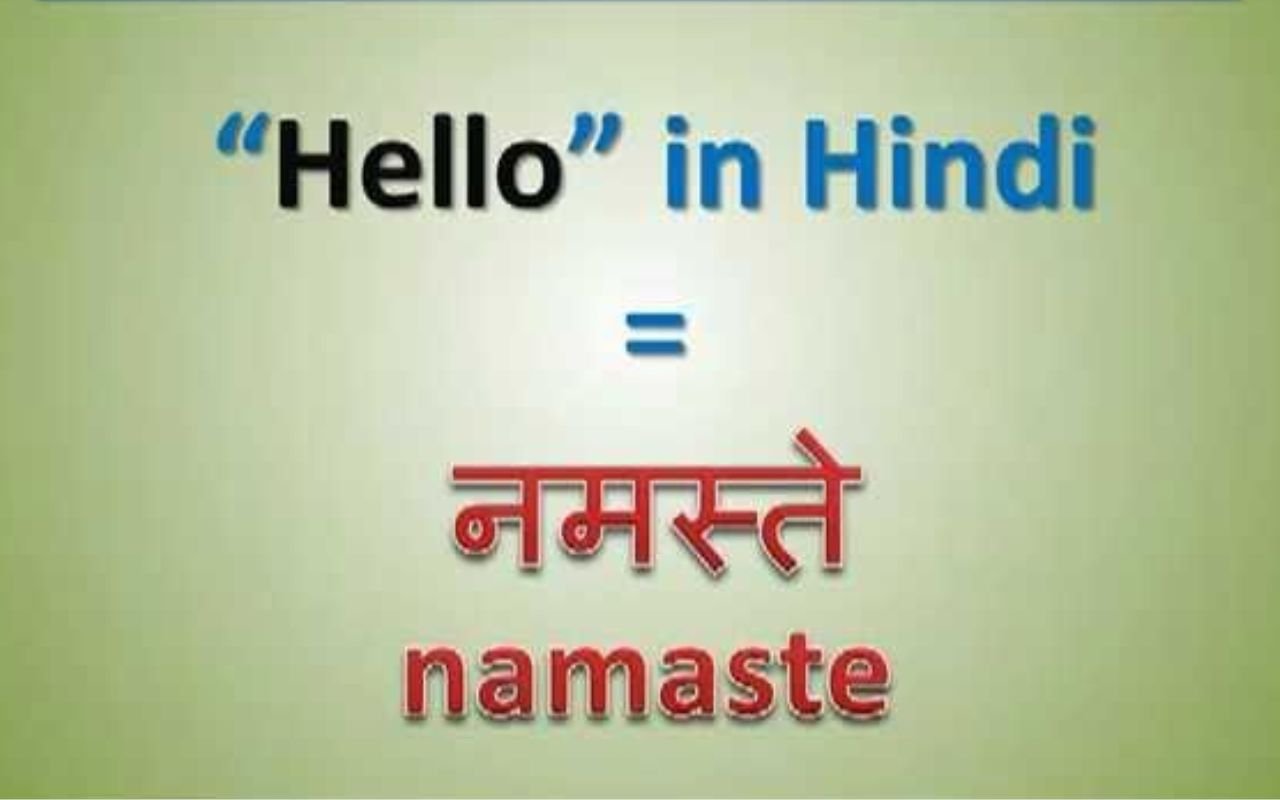If you’re looking for the translation of the word “Hello” in Hindi, you’ve come to the right place. The phrase “Hello” is one of the most commonly used greetings around the world, but its translation can vary based on the language and culture. In this detailed guide, we’ll not only focus on how “Hello” translates into Hindi but also explore various nuances of greetings in Hindi-speaking regions, regional variations, and how it is used in daily conversation.
This article aims to answer the most common questions about greeting someone in Hindi, especially when it comes to the word “Hello.” By the end of this guide, you will have a thorough understanding of how to use this greeting appropriately in different contexts.
ALSO READ: Michael Welsonovich Jr ACG Northern Leadership & Expertise
1. How to Say “Hello” in Hindi: A Direct Translation
In Hindi, the word “Hello” is commonly translated as “नमस्ते“ (Namaste). This is the most widely recognized greeting in India and many other Hindi-speaking regions. It is used both in formal and informal settings and carries a sense of respect, reverence, and warmth.
Namaste comes from Sanskrit and can be broken down into two parts:
- “Namah” meaning “to bow” or “to bow in reverence”
- “Te” meaning “you”
The phrase Namaste translates to “I bow to you” or “I honor you” and is used as a sign of respect and a polite greeting.
Another common translation of “Hello” in Hindi is “नमस्कार“ (Namaskar), which is very similar to Namaste but is typically more formal and used in respectful interactions, especially when greeting elders or in a professional setting.
Alternative Translations:
- नमस्ते (Namaste)
- नमस्कार (Namaskar)
- हैलो (Hello) – While Hindi speakers typically use “Namaste” or “Namaskar,” the English word “Hello” is also commonly understood and used in casual conversations.
2. Popular Variations of “Hello” in Hindi
While Namaste is the most well-known greeting in Hindi, the language and culture offer several other variations depending on the region, time of day, or formality level.
Regional Variations:
- सुप्रभात (Suprabhat) – Used in the morning, this means “Good Morning” and is a more polite way to greet someone in the early hours.
- शुभ संध्या (Shubh Sandhya) – A greeting used in the evening, meaning “Good Evening.”
- क्या हाल है? (Kya haal hai?) – A more informal greeting that means “How are you?” Often used between friends or acquaintances.
- कैसा है? (Kaisa Hai?) – This is another informal greeting used to ask “How are you?” used primarily with men.
- कैसी है? (Kaisi Hai?) – The female version of the above greeting, used to ask “How are you?” to a woman.
Formal Variations:
- आपका स्वागत है (Aapka swāgat hai) – This means “You are welcome” and is used when you are welcoming someone formally.
- प्रणाम (Pranam) – A more respectful and formal greeting that is commonly used among elders.
3. Cultural Context of Greetings in Hindi-Speaking Regions
Greetings in Hindi culture hold significant cultural value. When you greet someone in Hindi, it is not just a form of communication, but a way of showing respect. The act of greeting someone properly is considered important in Indian society, and it’s common to greet elders with more formal terms such as Namaste or Namaskar.
The Namaste greeting is often accompanied by a gesture where the hands are placed together in a prayer-like position in front of the chest. This gesture is also called Anjali Mudra and is believed to create a positive energy connection between people.
Social Etiquette
In India and many other Hindi-speaking regions, when you greet someone, you should:
- Maintain eye contact.
- Bow slightly while saying “Namaste” or “Namaskar” for a more respectful greeting.
- Wait for the elder or senior person to initiate the greeting before you respond.
These simple actions are often considered a sign of respect and politeness in Hindi culture.
4. Common Mistakes People Make When Greeting in Hindi
If you are learning Hindi or visiting a Hindi-speaking region, here are a few common mistakes you might want to avoid when using greetings:
Mistake #1: Using “Hello” Instead of “Namaste” in Formal Settings
In Hindi, especially in formal settings like meeting elders or professional environments, using the English “Hello” may come across as too casual or impolite. It’s best to use Namaste or Namaskar to show proper respect.
Mistake #2: Not Using the Appropriate Regional Greeting
In different parts of India, regional languages and dialects influence the greeting styles. For example, in the southern part of India, people may say Vanakkam (in Tamil) or Namaskaram (in Malayalam) instead of Namaste.
Mistake #3: Mispronouncing “Namaste”
The correct pronunciation of Namaste is nah-mah-stay (not na-mas-tee). It’s crucial to get the pronunciation right to avoid confusion.
5. How to Use “Hello” in Different Settings
The context of greeting someone in Hindi varies depending on whether the setting is formal or informal, as well as the time of day.
Formal Settings:
- When greeting elders or senior professionals: “Namaste” or “Namaskar” is preferred. You may accompany this with the hands joined together in a prayer gesture for additional respect.
- In a workplace or business meeting: Depending on the context, you can use Namaskar or Aapka Swāgat Hai to greet your colleagues or clients.
Informal Settings:
- Among friends and peers: “Kya haal hai?” (How are you?) is commonly used. You can also use Hello in casual settings, as it’s widely understood.
- With children or close acquaintances: “Namaste” is often still used, but informal greetings like Kya Kar Rahe Ho? (What are you doing?) are also common.
ALSO READ: How to Optimize Fladderak Roof Management for Your Home
6. FAQ About Sunder Translate Hello in Hindi
Q1: What is the meaning of “Namaste” in English?
A1: Namaste means “I bow to you” or “I honor you.” It is a sign of respect used when greeting someone in Hindi-speaking regions.
Q2: How do you say “Hello” in Hindi?
A2: The most common way to say “Hello” in Hindi is Namaste or Namaskar.
Q3: Can I use “Hello” in Hindi?
A3: Yes, in informal settings, many people use the English word “Hello,” especially in urban areas, but Namaste or Namaskar is more common in formal settings.
Q4: What are other common greetings in Hindi?
A4: Other greetings include Suprabhat (Good Morning), Shubh Sandhya (Good Evening), and Kya haal hai? (How are you?).
7. Conclusion About Sunder Translate Hello in Hindi
Sunder Translate Hello in Hindi Understanding how to greet someone properly in Hindi is crucial for effective communication and building respectful relationships in Hindi-speaking regions. Whether you’re saying Namaste or using regional variations, greeting someone with warmth and respect is a fundamental part of Indian culture.





